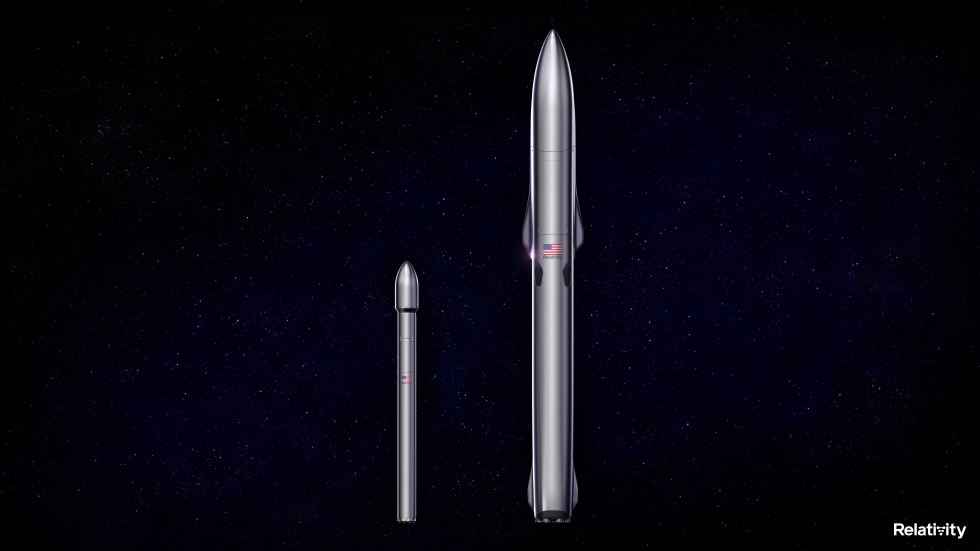
Relativity Space announced Tuesday morning that it has raised an additional $650 million in private capital and that this money will fuel an ambitious agenda of 3D printing large, reusable rockets.
The new funding will accelerate development of the "Terran-R" launch vehicle, Relativity Chief Executive Tim Ellis said in an interview. This large orbital rocket will be about the same size as SpaceX's Falcon 9 rocket. However, Ellis said, the entire vehicle will be reusable—the first and second stages, as well as the payload fairing. And it will have the capacity to lift 20 tons to low Earth orbit in reusable mode, about 20 percent more than a Falcon 9 booster that lands on a drone ship.
With the Terran-R vehicle, therefore, Ellis said Relativity Space aspires to not just match the remarkably capable Falcon 9 rocket but to exceed its performance.
"We're trying to ice skate to where the puck is going," Ellis said, adding that Relativity wants to be similarly disruptive to SpaceX, but in its own way. "What we keep hearing from customers is that they don't want just a single launch company that is, frankly, the only quickly moving, disruptive provider."
Powered by seven main engines, the Terran R vehicle will initially launch from Cape Canaveral Space Force Station in Florida. Relativity has set a goal to launch in 2024, and Ellis said the company has signed a binding contract for multiple launches with an "anchor customer" he declined to name. Relativity has not publicly released a price for a launch.
Inspired by SpaceX
Ellis co-founded Relativity Space five years ago and said he and co-founder Jordan Noone both were influenced by the achievements of SpaceX—which by then had begun to vertically land orbital rockets—as well as Elon Musk's goal to establish a human settlement on Mars.
"I was inspired by SpaceX landing rockets and docking with the space station," Ellis said. "Yet despite all of that success, we realized that there were two core issues." Those issues were a lack of planning for how to live on Mars and a space industry still using labor-intensive practices.
"In every SpaceX animation, we saw a fade into black right when people walked out of the rocket on Mars," Ellis said. "So what was clear [is] that there needed to be some other company building humanity's industrial base on Mars. Replicating the infrastructure for a million people that live on Mars is a massive undertaking, and I think a lot of people need to work on it."
Relativity seeks to do this by pushing forward 3D-printing technology. Ellis intends to disrupt the long-standing aerospace practice of using fixed tooling to manufacture rockets, which are then finished using a hands-on process of adding thousands of parts. Ultimately, Relatively hopes to use what it learns about printing rockets on Earth to additively manufacture habitats and other materials on the surface of Mars.
Even as Relativity Space seeks to augment the efforts by Musk and SpaceX to make humans a multiplanetary species, the company is also directly competing with its much more established rival. If successfully developed, the Terran R would challenge SpaceX's Falcon 9 rocket for both government and commercial launch contracts.
However, Ellis said it would be a mistake to compare the Terran R rocket to the Falcon 9. The vehicle should be thought of more like a miniature version of SpaceX's Starship rocket, he said, with an upper stage that could transfer payloads through space, to the Moon and perhaps even Mars. In terms of appearances, too, it resembles Starship more than the Falcon 9.
Fully reusable
The Terran R vehicle will have a first stage that lands on a drone ship at sea, and the second stage will retain its payload fairing after satellite separation. Then, this combined stack, the second stage and payload fairing, will make a propulsive landing from orbit.
"To my knowledge, we're only the second fully reusable vehicle other than Starship that's even been planned," Ellis said.
The rocket's first stage will be printed from a custom aluminum alloy, and the upper stage will be built from a more exotic, heat-resistant material to withstand re-entry temperatures. For the rocket's first missions, Relativity will seek to bring back the first stage, incorporating full-vehicle reuse over time, Ellis said.
If all of this sounds ambitious, that's because it is, especially for a company that has yet to launch a rocket or even perform an integrated-stage test firing. However, Relativity's steady growth, to about 400 employees now, and total fundraising of $1.34 billion lend some credence to the idea that it may indeed be successful.

Relativity is also getting closer to its first Terran 1 launch attempt. This much smaller rocket has a capacity of 1.25 metric tons to low Earth orbit. Ellis said the company already has printed 85 percent of the first Terran 1 flight rocket, including the first and second stages. Relativity will ship the second stage to Stennis Space Center in Mississippi "toward the end of summer" for hot fire tests. The company's launch site is due to be activated early this fall.
The goal remains launching the Terran 1 rocket for the first time this year, Ellis said, and the company is "charging hard" toward it. But clearly, Relativity does not intend to stop there.
reader comments
340